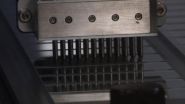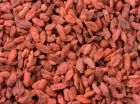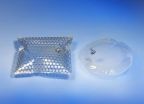(Press-News.org) In the war on cancer, perhaps there is nothing more powerful in a physician's arsenal than early detection. Despite recent advances in early detection and treatment, breast cancer remains a common and significant health problem in the United States and worldwide. Approximately one in ten women will get breast cancer in their lifetime and more than half of women with late stage cancer (II and III) have no cure or effective therapeutic available.
Using a new, powerful method for rapidly screening molecules associated with disease, proteomics expert Joshua LaBaer and colleagues from the Biodesign Institute at Arizona State University have identified a broad panel of 28 early predictors, or biomarkers, that may one day aid in the early diagnosis of breast cancer.
"We do not have any available blood markers for breast cancer," said LaBaer, a Virginia G. Piper Chair in Personalized Medicine at ASU who directs the Center for Personalized Diagnostics at the Biodesign Institute. "Our hope is to combine a new type of blood test with mammography screening to aid in the early detection of breast cancer."
The findings represent the first demonstration of a custom protein array technology deployed to find biomarkers in breast cancer patients before they were clinically diagnosed for cancer. These biomarkers were specific for breast cancer patients and not in healthy women or women with a benign form of breast disease.
Their findings appear in the American Chemistry Society's Journal of Proteome Research.
The LaBaer lab is involved in a quest for biomarkers that detect early disease and distinguish benign breast disease from invasive cancers to guide patient and doctor decisions. LaBaer is an expert in a burgeoning field that strives to understand the global role of protein function, called proteomics, that plays a powerful and relevant role in the discovery of biomarkers—unique molecular fingerprints of disease---that is part of a large scale Biodesign Institute effort to identify biosignatures that can provide early warning for those at risk of major illnesses, including cancer and diabetes.
To develop new biomarkers for the early detection of breast cancer, LaBaer's team explored the intersection between cancer and our bodies' primary defense mechanism against invaders, the immune system. Previous studies have shown that proteins produced by cancers can trigger the body to produce antibodies that are not found in healthy individuals. These "autoantibodies" can be measured in the blood and used to betray the presence of a hidden cancer.
The challenge faced by researchers is to determine which antibodies among millions are specific for breast cancer. To accomplish this, the team used a novel protein microarray technology, called Nucleic Acid Protein Programmable Array (NAPPA), which was invented in LaBaer's Harvard Institute of Proteomics lab in 2004.
Protein microarrays display thousands of different candidate proteins lined up in rows and columns on a single microscopic slide. A tiny drop of blood was added to the microarray to look for proteins that are recognized by the antibodies from the cancer patients but not from the healthy women.
To narrow down the list of candidates, several successive screens were performed that compared the immune responses in women with early-stage breast cancer, those without cancer, and those with benign abnormalities in their breasts. The patients and controls were also matched for age and location.
Three phases of screens were performed, using increasingly rigorous statistical selection standards that narrowed down the number of potential biomarkers candidates from 5,000 to 761, which showed any measurable difference between healthy and disease populations, to 119, which showed a clear statistical difference. Finally, these were then tested in a blinded study (where the researchers did not know which samples were from breast cancer patients and which ones were from controls) to find the final 28 biomarkers. The group not only looked at how each individual biomarker fared during the screening, but also how the entire panel of biomarkers worked together.
This was the first time the group has utilized NAPPA technology to identify the parts of the immune response that are activated during cancer, and the first serum biomarker panel developed for the discrimination of benign breast disease from invasive breast cancers. The group was pleased to confirm that many of the candidate biomarkers have also been described as important in breast cancer tumor biology and pathology.
"We were surprised at how hard it is to find biomarkers like this," said LaBaer. "The changes are subtle and rare, which is a real warning shot to those investigating breast cancer research. The key is a team approach that combines many different types of scientific expertise to tackle the problem."
In addition, LaBaer's team has a broad interest in identifying autoantibody biomarkers in patients that can be readily used for the detection of many other cancers, such as ovarian cancer, prostate cancer, and lung cancer as well as autoimmune diseases such as diabetes and arthritis.
Samples used in these analyses were obtained from Fox Chase Cancer Center (FCCC), the Duke University Medical Center (DUMC), and the Dana-Farber Cancer Institute (DFCI) with support from the National Cancer Institute (NCI) Early Detection Research Network and the NCI Breast SPORE program. LaBaer's research is supported by grants from the NCI branch of the National Institutes of Health and a $35 million philanthropic gift from the Virginia G. Piper Charitable Trust.
INFORMATION:
Scientists discover powerful biomarker panel for the early detection of breast cancer
2010-12-17
ELSE PRESS RELEASES FROM THIS DATE:
Study shows garlic could protect against hip osteoarthritis
2010-12-17
Researchers at King's College London and the University of East Anglia have discovered that women who consume a diet high in allium vegetables, such as garlic, onions and leeks, have lower levels of hip osteoarthritis.
The findings, published in the BMC Musculoskeletal Disorders journal, not only highlight the possible effects of diet in protecting against osteoarthritis, but also show the potential for using compounds found in garlic to develop treatments for the condition.
A relationship between body weight and osteoarthritis was previously recognised, although it ...
Lost images of 'human exhibits' in Britain discovered
2010-12-17
A University of Leicester researcher has discovered two photographic images, presumed lost, of native Americans brought to Britain by Roger Casement a century ago.
Dr Lesley Wylie, Lecturer in Latin American Studies in the School of Modern Languages, University of Leicester, made the discovery during her research for a book on the Putumayo, a border region in the Amazon. Her book forms part of the AHRC-funded research project, American Tropics: Towards A Literary Geography, based at the University of Essex.
The photographs were found among a photographic collection ...
Alcoholics beware -- genetic variation linked to liver cirrhosis in Caucasians
2010-12-17
A new study by German researchers found that a variation in the PNPLA3 (adiponutrin) gene was associated with cirrhosis of the liver and elevated transaminase (liver enzyme) levels in alcoholic Caucasians. The risk of cirrhosis in alcoholics in the genetic high risk group might be as high as 25% to 50%. Full findings are published in the January 2011 issue of Hepatology, a journal of the American Association for the Study of Liver Diseases.
Alcoholic liver disease (ALD)—ranging from alcoholic fatty liver to alcohol induced liver fibrosis and cirrhosis—accounts for more ...
Goji berries have the same nutrients as fruits and vegetables and a placebo effect
2010-12-17
While the consumption of Goji berries has risen dramatically over the last months, their properties have not been scientifically proven yet by any relevant clinical intervention study with humans. Most of Goji berries' components are contained in the recommended fruit and vegetable intake in balanced diets. The only difference is the "significant placebo effect" on people consuming them. Also, the species Lycium Barbarum –to which Goji berries exported from China belongs– originally comes from the Mediterranean and belongs to the Solanaceae family, the same family to which ...
No change in health gap between England's richest and poorest
2010-12-17
Significant health inequalities still exist between the country's richest and poorest according to the latest findings from the biggest annual survey of health in England, The Health Survey for England. The survey, conducted by the National Centre for Social Research and UCL and funded by The NHS Information Centre, shows that people in the lowest income households continue to experience much worse outcomes across key health measures than people in the highest income households.
Men and women in the lowest income bracket are three times more likely than those in the highest ...
Blocking the critical structure that lets cancer cells move -- their feet
2010-12-17
DURHAM, N.C. -- Scientists now know that some cancer cells spread, or metastasize, throughout the body the old-fashioned way -- by using their feet. But researchers at Duke Cancer Institute have discovered a way to short-circuit their travels by preventing the development of these feet, called invadopodia. This discovery is even more important because preventing the development of these "feet" also eliminates the action of proteins present in the feet that burn through intact tissue and let cancer cells enter new cells.
The results could yield a treatment to prevent the ...
Report: Policies to spur renewable energy can lower energy costs
2010-12-17
The South could pay less for its electricity in 20 years than is currently projected if strong public policies are enacted to spur renewable energy production and use, according to a report released today by researchers at the Georgia Institute of Technology and Duke University. The 190-page report, "Renewable Energy in the South," builds on a short policy brief released last summer and provides an in-depth assessment of the scope of renewable energy resources in the South and their economic impacts on electricity rates and utility bills in the region.
Skeptics of renewable ...
Kids got the blues? Maybe they don't have enough friends
2010-12-17
Montreal, December 16, 2010 – Friendless kids can become social outcasts who risk spiraling into depression by adolescence, according to new research from Concordia University, Florida Atlantic University and the University of Vermont. Yet for most shy and withdrawn children, the study reports in the journal Development and Psychopathology, friends can be a form of protection against sadness.
"The long-term effects of being a withdrawn child are enduringly negative," says lead author William M. Bukowski, a psychology professor and director of the Concordia Centre for ...
Evidence suggests e-cigs safer than cigarettes, researcher claims
2010-12-17
In a new report that bucks the concerns raised by the Food and Drug Administration, a Boston University School of Public Health (BUSPH) (sph.bu.edu) researcher concludes that electronic cigarettes are much safer than real cigarettes and show promise in the fight against tobacco-related diseases and death.
The review, which will be published online ahead of print this month in the Journal of Public Health Policy, is the first to comprehensively examine scientific evidence about the safety and effectiveness of electronic cigarettes, also known as e-cigarettes, said Michael ...
Films for façades
2010-12-17
Films instead of walls. This is an idea that fascinates architects all over the world. The Eden Project in Southern England, the National Aquatics Center built for swimming events at the Olympics in Beijing and the Allianz Arena in Munich are only three examples of what you can make from plastic sheets. Ethylene tetraflourethylene (ETFE), a transparent membrane, is especially popular because it enables buildings that shine in all colors as in Munich and Peking. But, we are not just talking about colors. You can use this new foil for an intelligent improvement of existing ...



